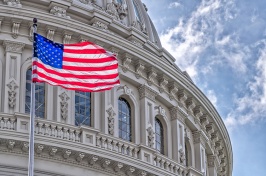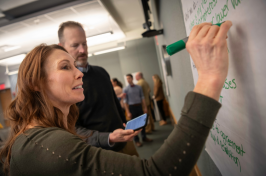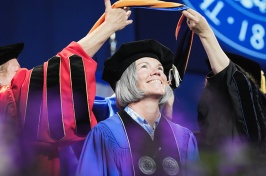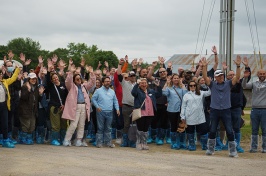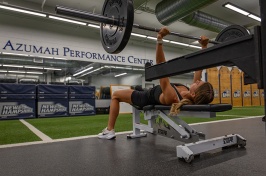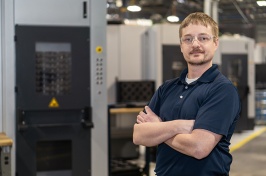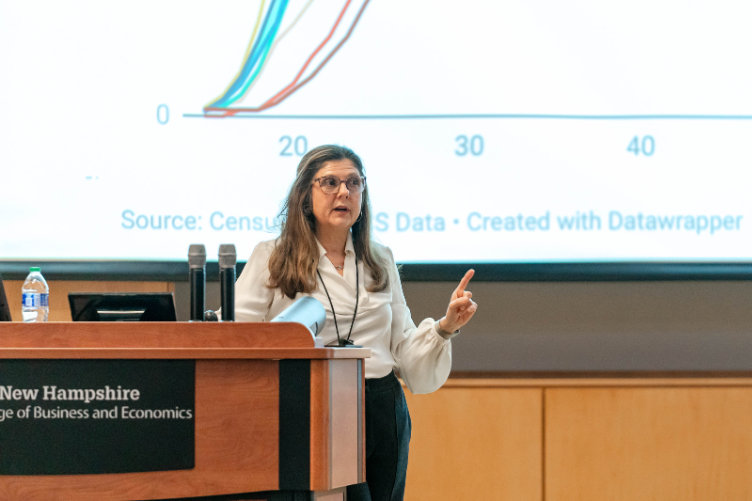
Betsey Stevenson, former chief economist at the U.S. Department of Labor, discusses how economic shifts opened new doors for women and altered the landscape of work during the Hogan Lecture at Paul College on May 1. (Photo by Kayla Vine)
Girls growing up today are surrounded by images of successful women, like Taylor Swift, that reflect a world of opportunity.
While not everyone can be Taylor Swift, the images are far from those of the 1950s, where women were often portrayed in domestic settings. Economist Betsey Stevenson says this isn’t just a cultural shift — it’s an economic revolution that has enabled women to move from constrained domestic roles to diverse and influential positions that drive the labor market.
"Economics has a lot to tell us about how that transition happens," Stevenson says. “Because families and the labor force are connected. In economics, each decision you make creates an interdependency that shapes the constraints for the next decision you're going to make."
Stevenson delivered the 2025 John A. Hogan Distinguished Lecture at the UNH Peter T. Paul College of Business and Economics on May 1. A professor at the University of Michigan’s Ford School of Public Policy, former chief economist at the U.S. Department of Labor and member of the White House Council of Economic Advisers under the Obama administration, Stevenson traced the interconnected forces that transformed women’s choices around work, education, marriage and family.
Her lecture, "Women's Evolving Role in the Labor Market: Families, Work, and Gender Equity in the 21st Century," outlined three significant forces driving the change: technological advancements, legal reforms and global trade.
In the home, innovations like washing machines and prepared foods reduced the need for skilled domestic labor, while trade made once-expensive goods like clothing more affordable and eliminated the need for tasks like sewing and mending.
Stevenson also pointed to policy milestones — like the Equal Pay Act of 1963, Title VII of the Civil Rights Act and Title IX — as pivotal in removing women's work and education barriers. Access to birth control and changes in divorce laws further reshaped decisions around marriage, parenthood and career planning.
The Changing Nature of Marriage and Family
In previous generations, marriage was often seen as a prerequisite to stability — something to secure early in adulthood. But that urgency has faded, Stevenson explained, as the marriage model has shifted. No longer rooted in economic specialization where one partner worked outside the home and the other managed domestic life — modern marriages are more likely to be partnerships based on shared goals, interests, mutual enjoyment and couples spending more time together overall.
“We're getting an increase in the age of first marriage, particularly among those with greater market skills, because now I'm looking to marry somebody who has a lot of the same interests as me, so it's more optimal to wait until I actually know what my adult interests are going to be, because people evolve in their 20s,” Stevenson says. “Hint, hint, hint for all of you in your 20s.”
These evolving dynamics have also reshaped family life. Although birth rates initially declined as women delayed marriage and parenthood, Stevenson shared data showing a rebound in completed fertility. Women today are waiting longer to have children, but many are ultimately having more children than previous generations.
Women Surpassing Men in Education
Stevenson’s data showed that women outpace men in education at nearly every level. They comprise 59% of doctoral degree recipients, including 61% of those in health and medicine. Undergraduate enrollment trends show a similar pattern, with girls significantly more likely to pursue postsecondary education.
more likely to pursue postsecondary education.
That trend is reshaping the labor force. After decades of gains and a setback during the COVID-19 pandemic, female labor force participation has not only recovered but reached new highs, according to Stevenson.
“Women are working more than ever before. They're getting more education than men … they're out-earning their husbands,” Stevenson says. "America's comparative advantage is high-skilled workers. Who are high-skilled workers? They're female workers.”
More Progress Needs to be Made
Despite decades of gains, Stevenson says the structure of work and public policy still hasn’t fully adapted to modern family life's realities. Issues like inadequate parental leave, expensive childcare and inflexible work schedules make it harder for families to thrive.
“Today's families are continuing to struggle with workplace norms and public policies designed for households in which one person is responsible for all the life outside of work and raising children,” Stevenson says.
Stevenson is optimistic that artificial intelligence and the next wave of technological change will become tools for creating more flexibility in how we work.
“My hope is that we can finally use this new technological innovation to take the time that we want to be with our families,” Stevenson says. “I want those AI robots to give you the space to be able to enter and exit work as it suits your lifestyle instead of feeling like you have to make a decision that is for now and forever.”
-
Written By:
Aaron Sanborn | UNH Paul College & CHHS | aaron.sanborn@unh.edu










